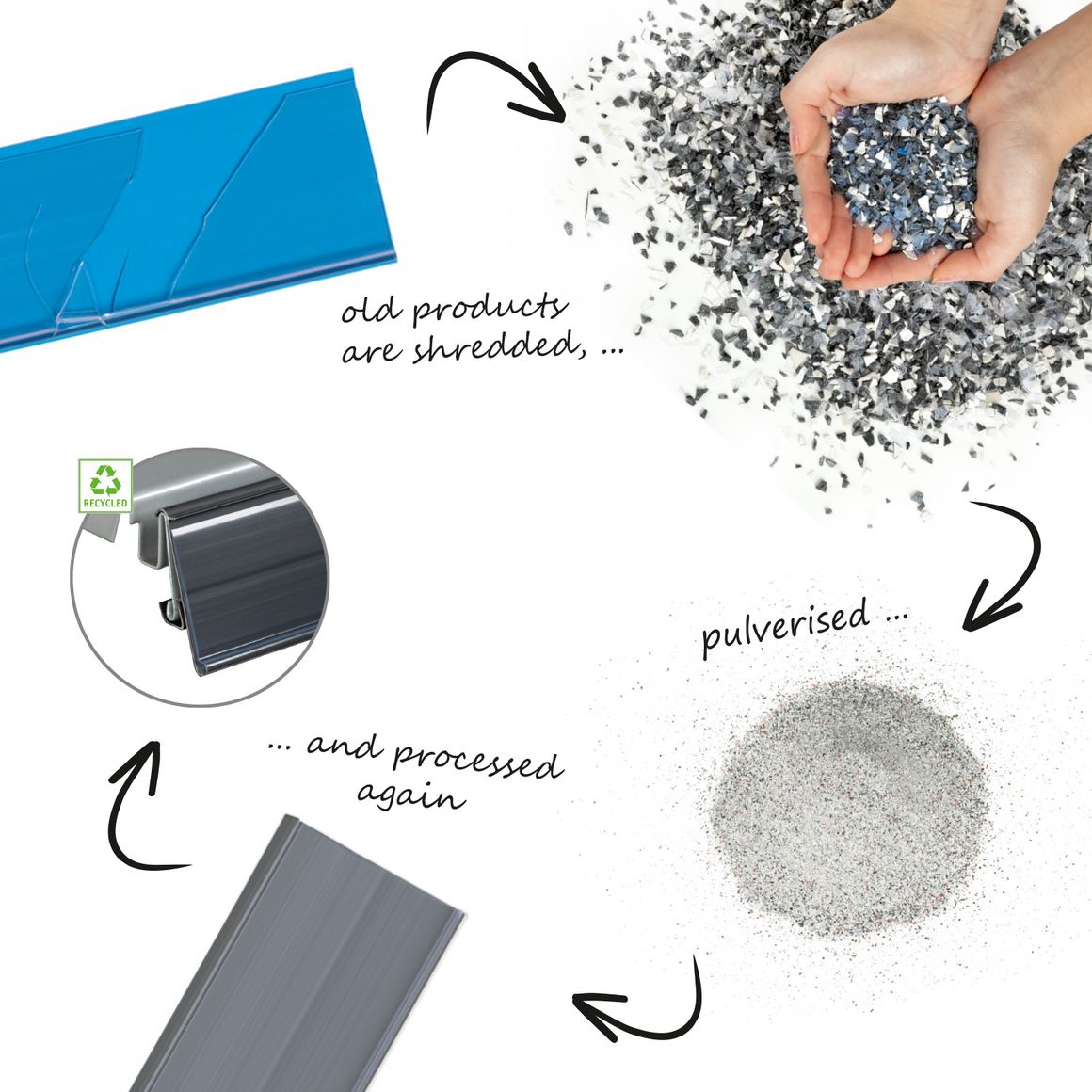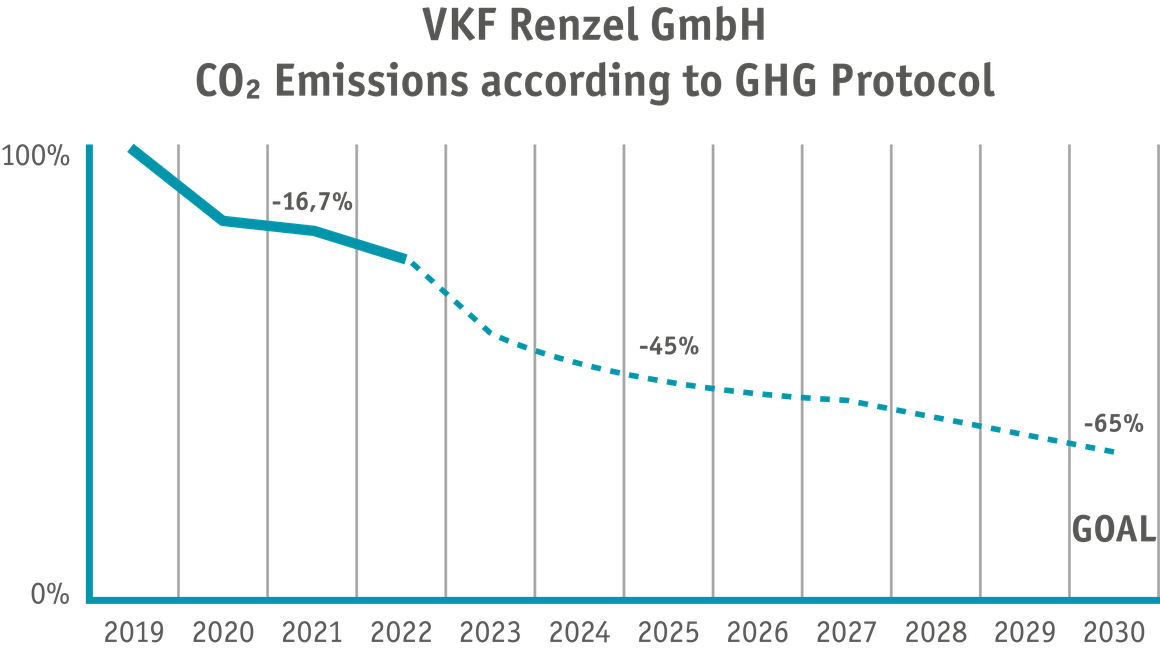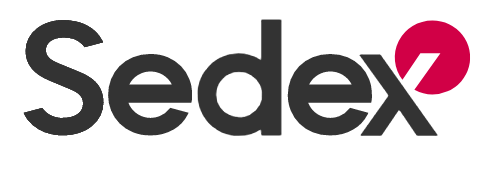Sustainability
at VKF Renzel
Environmental Friendliness and Sustainability
The discussions on the topic of sustainability bring with them uncertainty but also a change in thinking. Since we also process plastics, we have thought about how we can react to this. We have been dealing with alternative materials for a long time.
As early as 2011, we were the first manufacturer to present a price rail made of PLA. In Austria, our range has included products with the "Bio-Logic" label, which are made from natural-substance-based plastics, for more than six years. Although demand was still low, we have remained true to the topic and have continued to expand it.
In the meantime, we offer a wide range of products that follow the idea of sustainability. These products are labelled accordingly. Already during production, we pay attention to the environmentally conscious use of raw materials, sort waste according to type and take back sold plastics to include them in the recycling cycle. This cycle is supported by the Code of Coduct, which is binding for VKF Renzel employees and suppliers.
Reduction of the CO2 footprint
Product Markings

Renzel Nature
Products with this label consist largely of natural, renewable raw materials. Finite raw materials are replaced in this way. In addition to the classic materials such as wood or paper, research is constantly being conducted into new materials.

Recycled Materials
Products with this marking consist of plastic waste or used goods that have been recycled. VKF Renzel regularly checks in which areas the use of recyclates is possible. In this way, resources are conserved and the cycle of recyclable materials is closed.

Natural Presentation
Products with this labelling help to reduce outer packaging in retail. Waste is avoided without sacrificing an appealing presentation for the customer. They also enable consumers to shop according to their needs.
FreeOceanTex
Advertising Banner made of SEAQUAL® YARN
Production and Recycling
Production & Recycling
Already during production, we pay attention to the environmentally conscious use of raw materials. Sorting the residual materials by type supports the recycling cycle. The return of sold plastics closes the recycling cycle, ensuring that raw materials are used sustainably.
Manufacturing
- careful planning of operations reduces raw material waste
- use of natural and recyclable resources ensures environmentally conscious disposal
- conscious use of raw materials excludes toxic outgassing or decomposition products
- compilation of the largest possible packaging units reduces emissions and saves packaging material
- use of self-produced solar power
Residue and Waste Disposal
- sorting of residual materials by type supports recycling by certified disposal companies
- energy generation through thermal recycling of combustible residues

Take-back of Plastics
- take-back of sold plastics
- plastics must be sorted, notified in advance and delivered free of freight charges in order to ensure a smooth and flawless return to the recycling loop.
- no take-back of third-party materials
Take-back of Plastics
- take-back of sold plastics
- plastics must be sorted, notified in advance and delivered free of freight charges in order to ensure a smooth and flawless return to the recycling loop.
- no take-back of third-party materials
CO2e Balance and Goals
"Our goal is to reduce emissions by 65% by 2030*"

2 and sub-areas from Scope 3.
Do you have questions?
Get in touch with us »

2 and sub-areas from Scope 3.
Do you have questions?
Get in touch with us »
Wallboxes & Photovoltaic System
In our company car park, 12 wallboxes have been installed that can be used to charge electric vehicles. The electricity for the charging stations is supplied by our own photovoltaic system on the hall roof. With this installation, we are laying the foundation for the conversion of our own company vehicle fleet to electric drive and setting another milestone in the direction of sustainability.
Code of Conduct of VKF Renzel
This Code of Conduct is binding for all employees and suppliers of VKF Renzel and is essentially based on the principles of the "United Nations Global Compact". It links our claim to compliance with the law with our special requirements for ethical conduct. It represents a claim on ourselves, and at the same time it is a promise to the outside world.
Download as PDF »
Code of Conduct of VKF Renzel
This Code of Conduct is binding for all employees and suppliers of VKF Renzel and is essentially based on the principles of the "United Nations Global Compact". It links our claim to compliance with the law with our special requirements for ethical behaviour. It represents a claim on ourselves, and at the same time it is a promise to the outside world.Download as PDF »

Sedex - Membership
Sedex is one of the world's largest supply chain assessment data platforms to store, analyse, share and report on business and sustainability practices. Over 74,000 global companies have chosen Sedex to create more socially and environmentally sustainable businesses and supply chains.Sedex provides data-driven insights, tools and services to help companies continuously improve environmental, social and governance (ESG) outcomes.
For Further Information
